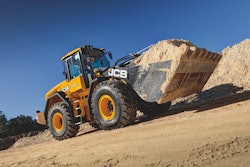
Daimler Trucks North America (DTNA) endorsed the mandate, which calls for a phased-in reduction of up to 25 percent in greenhouse gas (GHG) emissions from tractors and vocational vehicles—of which up to a five percent improvement must come from the engine.
DTNA said it was pleased that the EPA and NHTSA chose a non-disruptive implementation of the standard, which will allow the industry to phase-in technical changes over a decade and mitigates cost of acquisition pressures on customers.
“DTNA supports regulations which reduce GHG emissions as well as diesel consumption,” says Martin Daum, DTNA president and CEO. “As we have stated through the collaborative debate on the Phase Two rule, the final rule needed to provide clear, long-term targets for the entire vehicle, not just the engine. It also needed to provide enough time and flexibility for the OEMs and customers to decide themselves how to achieve the reductions in a way that is economically feasible.”
Daum says accomplishing up to 25 percent in reductions over the next 10 years will require the focused efforts from all of the company’s engineers.
“We are confident that we are up to the challenge, and know that we can have a significant impact on reducing GHG emissions and fuel consumption,” says Sean Waters, DTNA director of compliance and regulatory affairs.
Srikanth Padmanabhan, president of Cummins’ engine business, also expressed his company’s readiness to provide fuel savings and environmental benefits while complying with the mandate.










